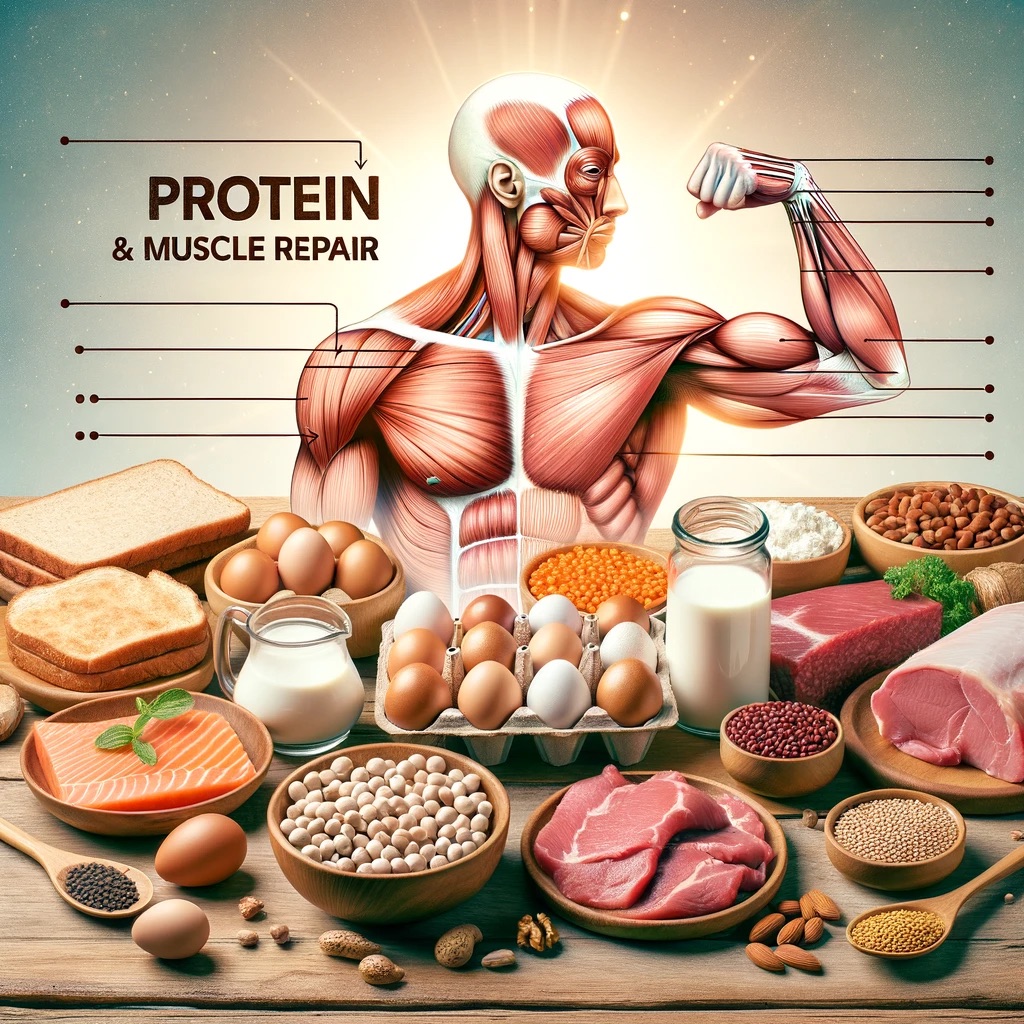The Science of Protein and Muscle Repair

When you engage in any form of exercise, especially strength training, you’re essentially creating micro-tears in your muscle fibers. This isn’t a bad thing; it’s actually the catalyst for muscle growth and strength gains. Your body responds to this “damage” by repairing and rebuilding the muscle tissue, making it stronger than before. This concept of stress (lifting), recovery (rebuilding), and adaptation (stronger than before to be able to handle the same stress if seen again) is foundational to the concept of building strength, muscle tissue, connective tissue, or improvements in structural resilience anywhere and everywhere in the body.
The key player in this repair process? Protein.
Proteins are made up of amino acids, the building blocks of life. When you consume protein, your body breaks it down into these amino acids, which are then used to repair and build new proteins, including the ones in your muscles. This process is a crucial part of the stress-recovery-adaptation cycle in training. You stress your muscles through exercise, recover with proper nutrition and rest, and adapt by becoming stronger.
Protein Needs: Sedentary vs. Active Individuals
The Recommended Dietary Allowance (RDA) for protein varies depending on your activity level. For sedentary adults, the RDA is about 0.8 grams of protein per kilogram of body weight. However, if you’re active and especially if you’re aiming to build muscle, you’ll need more—around 1.2 to 2.0 grams per kilogram. Some studies have shown numbers above these ranges to be valuable in certain instances, but this is at least a starting place for needs determination.
Weight Loss vs. Muscle Gain
If you’re looking to lose weight, protein becomes even more critical. A higher protein intake can help preserve muscle mass while you’re in a caloric deficit, ensuring that most of the weight you lose is fat. On the flip side, if you’re looking to gain muscle, you’ll need to consume more protein in addition to more calories to fuel your workouts and recovery…but it’s less worrisome that muscle will be lost (as long as you are still creating the necessary training stimulus) since you will likely be in a caloric surplus.
Protein and Aging
As we age, we naturally lose muscle mass, a condition known as sarcopenia. Additionally, older adults may find it more challenging to digest protein efficiently. Therefore, protein needs may increase with age to maintain muscle mass and ensure proper recovery.
How to Calculate Your Protein Needs
- Track Your Current Intake: Use a food tracking app to log what you’re eating for a few days. This will give you a baseline of your current protein intake.
- Set Your Protein Goal: Based on your activity level and goals, set a daily protein target.
- Plan Your Meals: Incorporate protein-rich foods into each meal to meet your daily target.
Whole Foods vs. Supplements
While supplements like protein powders can be convenient, whole foods should be your primary source of protein. Foods like lean meats, fish, eggs, and dairy are not only rich in protein but also provide other essential nutrients. If you’re lactose intolerant or have other dietary restrictions, plant-based proteins like legumes and nuts are also excellent options.
Protein Density vs. Caloric Density
When choosing a protein source, consider its protein density versus its caloric density. Foods that are high in protein but low in calories are generally better choices, especially if you’re trying to lose weight.
On-the-Go Options
Life gets busy, and sometimes you need quick and convenient protein options. Pre-packaged protein shakes, protein bars, and even packets of tuna or chicken can be lifesavers when you’re on the go.
Action Steps
- Start Tracking: Use a food tracking app to get a baseline of your current protein intake.
- Meal Planning: Plan your meals around protein-rich foods.
- On-the-Go Options: Keep convenient protein sources on hand for busy days.
By understanding the role of protein in muscle repair and growth, you can make more informed choices about your diet, optimizing your training and overall well-being. Protein isn’t just a nutrient; it’s a vital component of a balanced, healthy lifestyle.
